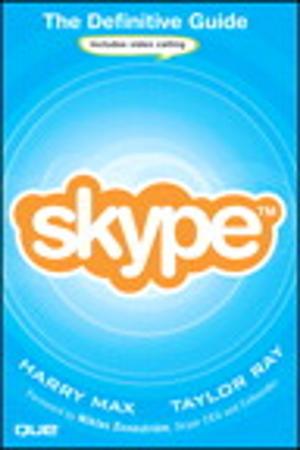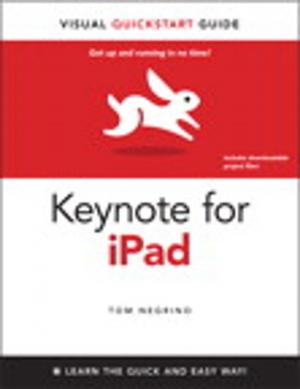Winning the Hardware-Software Game
Using Game Theory to Optimize the Pace of New Technology Adoption
Business & Finance, Management & Leadership, Planning & Forecasting| Author: | Ruth D. Fisher | ISBN: | 9780131364424 |
| Publisher: | Pearson Education | Publication: | March 4, 2009 |
| Imprint: | Prentice Hall | Language: | English |
| Author: | Ruth D. Fisher |
| ISBN: | 9780131364424 |
| Publisher: | Pearson Education |
| Publication: | March 4, 2009 |
| Imprint: | Prentice Hall |
| Language: | English |
“Many books discuss high-tech decision making, but this is the only book I know of that provides a systematic approach based on objective analysis.”
—Matthew Scarpino, author of Programming the Cell Processor
“This book offers a unique approach to analyzing business strategy that changes the focus and attitude to a lively and fun exercise of treating business strategy as a game.”
—Dave Hendricksen, Architect, Thomson-Reuters
USE GAME THEORY TO SOLVE THE #1 PROBLEM THAT CAUSES NEW TECHNOLOGIES TO FAIL IN THE MARKETPLACE: LACK OF COORDINATION
Too many advanced technologies fail the test of adoption, at immense cost to their creators and investors. Why? Many new technologies are launched into complex ecosystems where hardware, software, and/or connectivity components must work together—for instance, next-generation gaming and video platforms that can only succeed if they offer attractive, compatible content. Often, users aren’t ready to give up existing systems, and content or connectivity providers aren’t ready to move away from existing markets. In either case, the real issue is a lack of coordination. Fortunately, coordination problems have specific, proven solutions, and Winning the Hardware–Software Game shows you exactly how to find them.
Drawing on advanced ideas from game theory, economics, sociology, and business strategy, author Ruth D. Fisher presents a systematic framework for identifying, assessing, and resolving coordination problems among all the participants in a product ecosystem. Writing in plain, nontechnical, nonmathematical English, Dr. Fisher helps you discover specific steps that will prepare your customers and partners for successful adoption. Using these techniques, you can shape strategy, systematically reduce risk, and dramatically increase profitability.
Topics covered in this book include:
- Discovering the forces that drive or delay adoption by users and content providers
- Understanding networks, network effects, switching costs, technology compatibility, and other crucial issues
- Speeding the pace of adoption, and getting to the “tipping point” sooner
- Clarifying and restructuring the incentives that motivate users and software providers
- Engineering new systems to maximize the likelihood of adoption
- Creating expectations of adoption and decreasing the relative value of older systems
- Learning from Apple Newton versus Palm Pilot, HD DVD versus Blu-Ray, and other
significant technology battles - Leveraging lock-in, path dependence, standardization, and first-mover advantage
With so much at stake, Winning the Hardware–Software Game is a required resource for everyone concerned with new technology adoption—executives, strategists, R&D leaders, marketers, product managers, industry analysts, and investors alike.
“Many books discuss high-tech decision making, but this is the only book I know of that provides a systematic approach based on objective analysis.”
—Matthew Scarpino, author of Programming the Cell Processor
“This book offers a unique approach to analyzing business strategy that changes the focus and attitude to a lively and fun exercise of treating business strategy as a game.”
—Dave Hendricksen, Architect, Thomson-Reuters
USE GAME THEORY TO SOLVE THE #1 PROBLEM THAT CAUSES NEW TECHNOLOGIES TO FAIL IN THE MARKETPLACE: LACK OF COORDINATION
Too many advanced technologies fail the test of adoption, at immense cost to their creators and investors. Why? Many new technologies are launched into complex ecosystems where hardware, software, and/or connectivity components must work together—for instance, next-generation gaming and video platforms that can only succeed if they offer attractive, compatible content. Often, users aren’t ready to give up existing systems, and content or connectivity providers aren’t ready to move away from existing markets. In either case, the real issue is a lack of coordination. Fortunately, coordination problems have specific, proven solutions, and Winning the Hardware–Software Game shows you exactly how to find them.
Drawing on advanced ideas from game theory, economics, sociology, and business strategy, author Ruth D. Fisher presents a systematic framework for identifying, assessing, and resolving coordination problems among all the participants in a product ecosystem. Writing in plain, nontechnical, nonmathematical English, Dr. Fisher helps you discover specific steps that will prepare your customers and partners for successful adoption. Using these techniques, you can shape strategy, systematically reduce risk, and dramatically increase profitability.
Topics covered in this book include:
- Discovering the forces that drive or delay adoption by users and content providers
- Understanding networks, network effects, switching costs, technology compatibility, and other crucial issues
- Speeding the pace of adoption, and getting to the “tipping point” sooner
- Clarifying and restructuring the incentives that motivate users and software providers
- Engineering new systems to maximize the likelihood of adoption
- Creating expectations of adoption and decreasing the relative value of older systems
- Learning from Apple Newton versus Palm Pilot, HD DVD versus Blu-Ray, and other
significant technology battles - Leveraging lock-in, path dependence, standardization, and first-mover advantage
With so much at stake, Winning the Hardware–Software Game is a required resource for everyone concerned with new technology adoption—executives, strategists, R&D leaders, marketers, product managers, industry analysts, and investors alike.















